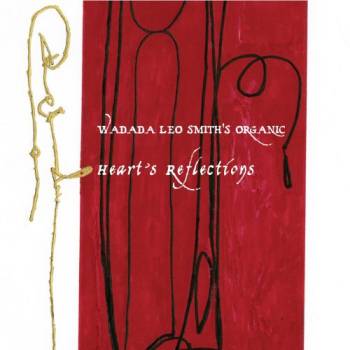I get dozens of emails every day but few more exciting than the one telling me that there's a new Bob Brookmeyer CD coming at the end of September. With his faithful ensemble, the New Art Orchestra as well as vocalist Fay Claasen, Brookmeyer has created "Standards." The idea of both Maria Schneider and the trombonist-arranger's oldest friend (they first met in 1946!), the CD will come out via ArtistShare meaning that you can take part in the project. If and when you sign up (the URL is below), you get a download of "How Deep Is the Ocean" and you'll understand why every new recording from the 81+ year-old Brookmeyer is a real treat. For more information, go to www.artistshare.com/projects/project_experience.aspx?projectID=409&artistID=22.
In May of this year, I wrote about percussionist-conceptualist Brian Adler and his "Helium Project" - at that time, I said "Essentially what Adler is doing is creating a coterie of collaborators throughout the world, musicians and vocalists he can work with when he is "on the road." You may have read of musicians who travel sans rhythm section and hire a local band/rhythm section for each gig. Through the "magic" of modern technology, Adler can compose, record, and edit a piece of music with anyone, anywhere, and any time. You may be thinking "what's the difference between hiring a local rhythm section and creating a song in this piecemeal fashion?" Through the Helium Music Project, Brian Adler has turned the world into his playground in that he already has a working relationship with his collaborators."
"Phase 2" is now out; it's one song "Esa Pantero Baja La Luna" and features the New York-based Adler with a trio of Argentinean musicians including Rodrigo Dominguez (tenor saxophone), Juan Pablo Arrendondo (guitar) and Jerónimo Carmona (acoustic bass). The drummer writes that "the piece is inspired by a poem by Jorge Luis Borges and the Argentine folk rhythm, the chacarera." There is no denying it's a propulsive number, built upon Carmona's thick-sounding bass lines and Adler's poly-rhythmic drumming. Both the saxophonist and guitarist play strong solos, the former pushing against the force of the rhythm section while the latter rides atop the fiery flow. You can listen and then purchase by going to helium.bandcamp.com/track/esa-pantera-bajo-la-luna.
Pianist David Berkman's approach to "standard" is anything but. He's the de-facto leader of the New York Standards Quartet, an ensemble that also features Tim Armacost (saxophones, alto flute), Gene Jackson (drums) and Yosuke Inoue (bass.) This "band of friends" has been making music together for 6 years and "Unstandard" (Challenge Records) is their 2nd CD.
The band spent a June day recording in Tokyo, Japan, and the results are a joyous set of tunes that are either "standards" or based on standards. The former group includes "swinging" takes of tunes such as "How High the Moon", "All the Things You Are" and "Stablemates" (dig the work of both the pianist and drummer as they play beneath the tenor sax solo and together on the piano spot.) The program also includes 3 short "Polka Beamlets" composed by Berkman (bet you can figure out what tune they are based on), 2 longer originals also composed by Berkman (based on standards), a duet of tenor sax and drums and one very short (:37 seconds) tenor solo from Armacost aptly titled "After Thought" (though not the final track.) The blend of alto flute and piano on Jimmy Van Heusen's "But Beautiful" is quite lovely; the duo ride atop the swirling cymbals, the rubato nature of the piece making the music seem suspended in time. Berkman's "Lunar" opens with a bass solo that quickly moves into a flying "walking" bass line supported by Jackson's highly propulsive drumming. Armacost, on soprano sax, really digs into his solo before yielding the spotlight to Berkman who absolutely "dances" over the drums.
The playing is "serious" even as the quartet is having fun making its way through the tunes. "They Ballet Girl Stirs (By Starlight)" (the title a nifty anagram and the words in parentheses tell what the tune is based on) is a pleasing ballad with emotionally rich tenor sax playing, full piano chords and more excellent work from the rhythm section.
What's not to like about "Unstandard"? The melodies are quite fine, the solos strong, the interplay exciting and intelligent, and Gene Jackson's work is stellar (bassist Inoue is the "true" time-keeper, though there are moments when his counterpoint to the soloist is quite imaginative.) On paper, this might look like a run-of-the-mill series of hard-bop interpretations; don't be fooled. The New York Standards Quartet makes creative music that rings true. For more information, go to www.davidberkman.com.























